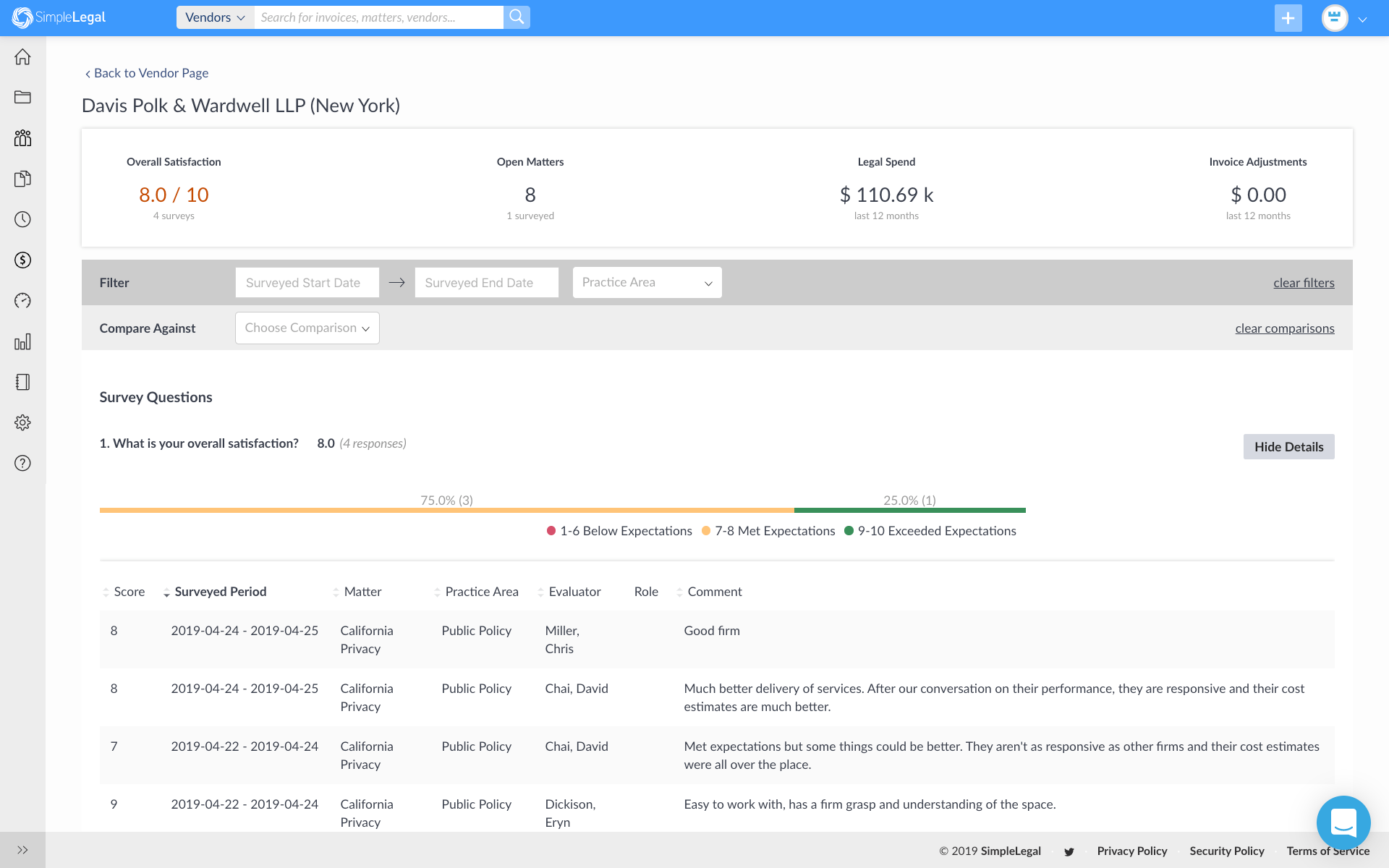Improve your IP management process by avoiding these 4 mistakes

Intellectual property management can get complicated due to the sheer volume of paperwork, vendors, and invoices involved. Before you know it, you’re spending money on patent work without knowing exactly what results you have to show for it.
Then, if the CFO asks you and the rest of the legal department to provide insight into the IP management spend, and you can’t give a detailed answer, you have a problem.
So how do you avoid this problem? If your legal team is making any of the common IP management mistakes below, it’s time to change the way you handle patent work.
1. Only Tracking Spend by Vendor
You can only get so much information from basic invoices. When you only track spend by vendor, you miss out on associated matter details and data, including documents, task codes, timekeepers, etc. And because most patent work is done on a fixed-fee basis, when you don’t track spend by matter, you risk not enforcing fixed-fee arrangements, discounts, and established budgets.
To gain greater visibility into how your budget is being used, you’ll need a tool with spend management capabilities, like SimpleLegal. Spend management breaks down invoices by UTBMS codes. Categorizing spend by codes allows you to see costs associated with vendors, product lines, geographic location, and other variables.
Tracking spend by matter helps you see exactly where you are investing your money — whether it be on protecting patents you already have or investing in new product lines. That information gives you the knowledge you need to make educated decisions about speeding up or slowing down patent matter work.
2. Choosing Vendors Based on Feelings Instead of Data
When you’re dealing with a high volume of patent matters, it’s easy to gloss over potential IP management issues. Without quick access to the right data, it’s difficult to ensure intellectual property compliance or properly manage your legal budget.
When vendor data isn’t readily accessible, you’re also more likely to choose vendors based on a gut feeling. These kinds of qualitative vendor decisions are based on anecdotal evidence. If you are dealing with a large number of patents and vendors, you’re working off of what you happen to remember about each vendor’s work.
To make data-driven decisions about the vendors you use for IP management, you need quantitative evaluations. With SimpleLegal, you can create vendor scorecards based on metrics such as total costs of services, estimates compared to actuals, spend by matter, etc. Scorecards allow you to compare vendors side-by-side.

These reports provide you with the data you need to answer questions such as:
- Does another vendor do the same type of work for less?
- Does a certain vendor require a lot of rework and end up costing you more?
- Are vendors adhering to fixed-fee arrangements?
- How long does it take each vendor to issue an invoice?
Vendor management reports also allow you to manage your vendor relationships more efficiently by viewing key metrics at a glance. By categorizing work by UTBMS code, you can quickly review how much time vendors are spending on document management, patentability investigations, infringement investigations, etc.
3. Allowing Vendors to Control Your Process
If you neglect to set a clear process for your intellectual property management, you put the control in the hands of your vendors — all of which will operate slightly differently. When you allow vendors to control the process, you’re essentially giving them some control of your finances as well.
Establishing billing guidelines is an important step in taking control of how you handle patent matters. Whether you choose an hourly or fixed-fee agreement, neither is effective unless you have a system to track and verify that vendors follow these agreements.
Billing guidelines give you the opportunity to manage several aspects of the IP management process, including:
- Invoice format: Are you open to various formats, or will you only accept LEDES files?
- Invoice timeline: How soon after work is completed must the vendor invoice you? Will you pay invoices received after the agreed-upon period has passed?
- Expenses: What expenses, if any, are you willing to reimburse?
- Communication: How often do you expect status updates? How should vendors send updates (email, calls, etc.)?
- Budgets: Are there spending caps tied to any particular patent matter or UTBMS codes?
Guidelines also help establish general expectations for both parties. You can put in writing what your legal department expects from vendors as well as what vendors can expect from your team.
For example, how involved will your team be in determining the scope of an individual patent? Will you accept work from any timekeeper at a firm you have hired, or will you specify who can work on each matter? Setting expectations up front helps avoid issues in the future.
Perhaps the most important step in taking control of the process is establishing how guidelines and expectations will be enforced. With spend management software, you can automatically flag issues such as overspent budgets, inaccurate invoices, unapproved expenses, and late invoices.
4. Building Every IP Management Matter from Scratch
If you deal with patent matters on a regular basis, there’s no reason you should begin any IP management matter with a fully manual process.
Instead, create IP management matter templates that designate what information each IP matter needs to include. You can even link templates to associated matter details like documents, vendors, and tasks. Templates not only save you from repetitive manual data entry, they also allow you to block matters from being created or moving forward if they are missing pertinent information.
Once you have templates set up, you can establish a matter intake process. With SimpleLegal, you can set permissions for each matter and/or document and designate approvers for matters. Configuring processes ensures that every IP management matter is handled according to a set standard – helping you save time and avoid frustrating mistakes.
Lastly, use matter reviews to analyze and refine your process. Matter review reports can help you pinpoint how your resources are allocated, how much different matters cost on average, and monitor both internal and external talent productivity.
Use SimpleLegal to Improve your IP Management Process
Patent matter volume can quickly become overwhelming. As your IP management work increases, you might realize that you’re spending a lot of time trying to find paperwork and hunting down a specific patent application that is mixed in with thousands of others. Before you know it, instead of protecting the company and focusing on growth, you’re buried in paperwork without a system to manage it, which means you won’t be able to keep an eye on your spending, either.
SimpleLegal spend and matter management solutions can help you handle everything from finance’s budget questions to your document management. Get in touch to discuss how our solutions will allow you to build more cost-effective and efficient IP management process.
If want to be prepared to answer any budget questions the finance department can throw at you, get started with spend management. Our e-billing solution can help you generate detailed reports that will allow you to build a more cost-effective and efficient IP management process.

